
ASUS ProArt P16 H7606 Review – Sleek Powerhouse for Content Creators
Many content creators tend to veer towards gaming laptops by dint of their powerful specifications though in the case of the ASUS ProArt P16 H7606, it’s not too far off the mark. Intended as their premier content creator laptop for 2024, the H7606 is a more refined version of the Zephyrus G16 seen at CES 2024 with upgunned hardware that includes a potent AMD Ryzen AI 9 HX 370 processor paired with top-shelf NVIDIA graphics.
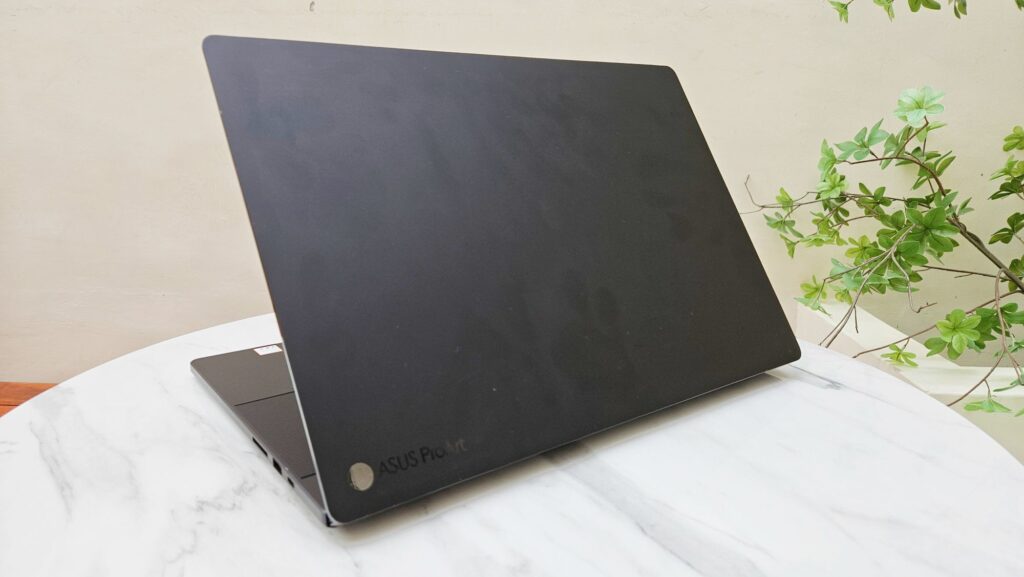
We had the opportunity to experience this sleek behemoth for several weeks – here’s our ASUS ProArt P16 H7606 where we share if this portable powerhouse is worth its substantial RM12,999 price tag.
ASUS ProArt P16 H7606 review – Build and Design
Table of Contents
Aesthetically speaking, our ASUS ProArt P16 H7606 review sample bears a rather close resemblance to the gaming oriented ROG Zephyrus G16 as it is built on the same base chassis and even has quite a number of similarities. However, the H7606 has several tweaks to its design and its specifications from the G16 that better optimise it for its role in content creation rather than gaming.
Rather than the reflective chrome strip bisecting the top lid of the Zephyrus G16, our ASUS ProArt P16 H7606 review sample has a top lid that simply has a smudge-resistant matte Nano Black finish all around with a subtle ProArt logo emblazoned in the corner alongside the ASUS ProArt wordmark. Build quality is top shelf without any give or flex in the top lid whatsoever.
Flipping the laptop is an easy one-handed job thanks to its smooth hinge mechanism that enables the 16-inch 4K Lumina OLED touch display to be angled to about a 120-degree arc. Unlike the 2.5K 240Hz non-touch display on the Zephyrus G16, our ASUS ProArt P16 H7606 review sample sports a much higher resolution, touch-capable 4K 60Hz Lumina OLED display.
In keeping with its focus as a content creator laptop, the display itself also has 100% DCI-P3, has VESA DisplayHDR True Black 500 certification, a Delta E<1 and also sports Pantone validation too. The display is also protected by Corning Gorilla Glass NBT which not only offers 6x better scratch-resistance over conventional glass but also improves visual clarity too.
Even better, the display also features stylus support too and bundles in an ASUS Pen 2.0 stylus as well as a USB to RJ45 wired ethernet dongle. Perched just up top is a FHD webcam with Windows Hello support for biometrics verification.
The keyboard itself is the usual compact white-LED-backlit design with 1.7mm key travel that lacks a numeric keypad and is flanked by upward firing six-speaker suite tuned by Harman Kardon and with Dolby Atmos support. In keeping with recent times, it also has – you guessed it – the Microsoft Copilot key inset into the corner.
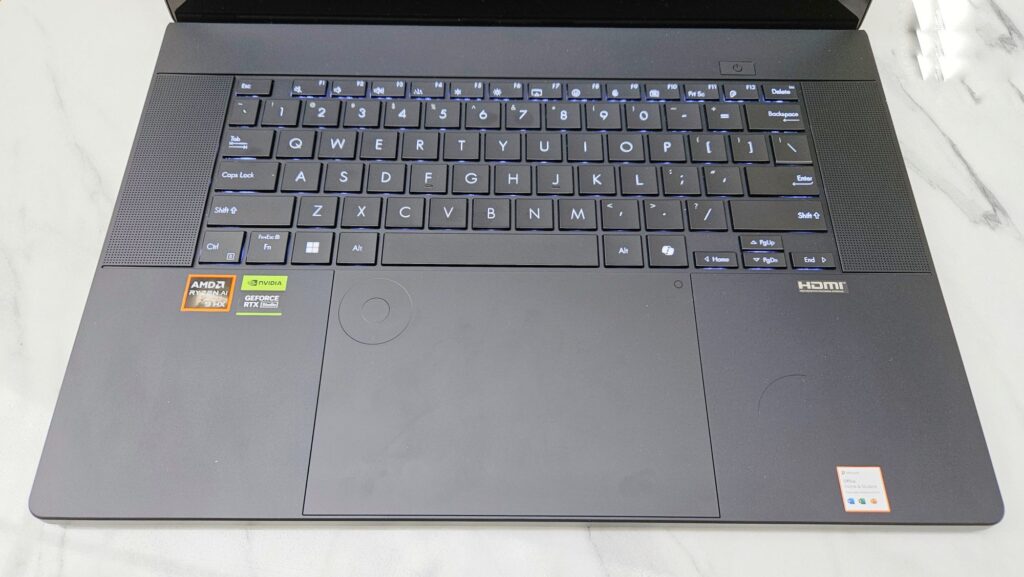
Where it differs substantially is its inclusion of a touchpad with an ASUS DialPad inset into the upper left corner that enables users to access selected system functions and scroll through certain features on Adobe suite apps like Photoshop and Premiere Pro.
In terms of port placement, our ASUS ProArt P16 H7606 review unit mimics its Zephyrus G16 sibling with the left hosting a proprietary port for the charger, a HDMI 2.1 port, a Type-C USB 4 port, a Type-A USB 3.2 Gen 2 port and a 3.5mm combo audio jack. The right side of the laptop holds an SD card reader, a single Type-A and TypeC USB 3.2 Gen 2 port.
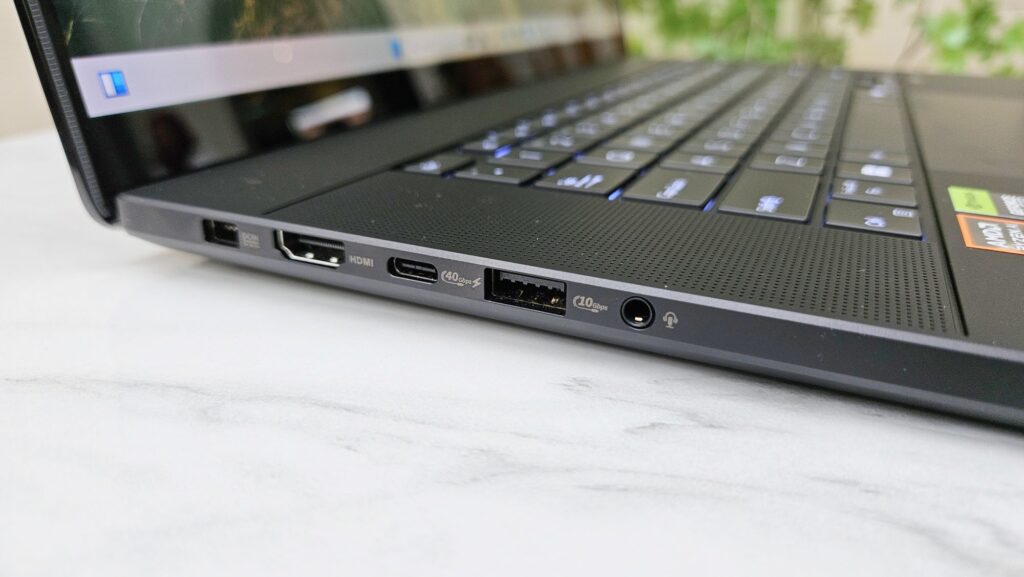
Interestingly, the rear of the laptop has a series of white LED indicators subtly inset in the rear that show whether the laptop is on and whether the onboard storage is in use. The underside is held in place by star-shaped torx screws which makes it an inconvenience to open but which may be necessary down the line if you aim to upgrade the storage later on via the spare SSD slot. Unfortunately, the RAM has been soldered in as with many other laptops though the 32GB of LPDDR5X RAM is more than sufficient for content creation work and is double the base RAM configuration of the Zephyrus G16 models available in Malaysia.
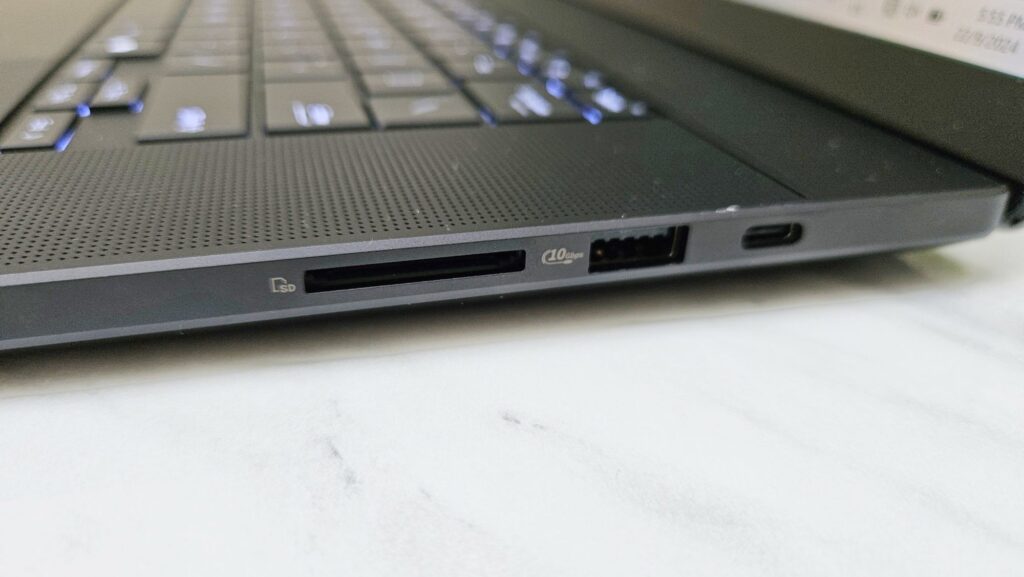
Overall build quality is excellent with the all-metal chassis featuring a MIL-STD-810H level of certification for resistance against extremes of shock, temperature and vibration while the matte Nano Black finish ensures that it will fit in well in any corporate setting. The 14.9mm slimness and relative lightness of the design, especially something that’s packing a NVIDIA GeForce RTX 4070 Laptop GPU are impressive, allowing it to be conveniently tossed into a 15.6-inch backpack for all-day carry.
ASUS ProArt P16 H7606 Review – Specifications and Benchmarks
Following their usual practice, ASUS will vary the processor, display, RAM, GPU and storage configurations slightly between different markets. Our ASUS ProArt P16 H7606 review unit for Malaysia comes with the AMD Ryzen AI 9 HX 370 processor running Windows 11 Home paired with 32GB LPDDR5X RAM that has been soldered in and a 2TB M.2 NVME PCIe 4.0 SSD for storage with a spare SSD slot to add an additional SSD. Where the H7606 impresses is that it manages to cram in an NVIDIA GeForce RTX 4070 Laptop GPU with 8GB GDDR6 VRAM and running NVIDIA RTX Studio drivers to ensure superior stability.
On paper, the AMD Ryzen AI 9 HX370 CPU and the NVIDIA GeForce RTX 4070 GPU share a combined 120W TDP which is the upper performance envelope for a thin design like this. The processor itself comes with an NPU rated for 50 NPU AI TOPS for better efficiency in AI-related tasks, while the powerful NVIDIA GeForce RTX 4070 GPU is of course more capable, with up to 321 TOPS AI processing power.
Keeping all this hardware cool is a triple fan Tri-fan system with a dedicated fan for the CPU and the GPU along with an additional fan that shunts hot air out and away towards the rear underside of the laptop. A welcome addition here is the provision of a built-in dust filter on the vents that keeps dust and dirt from getting into critical components.
Here’s how the hardware for our ASUS ProArt P16 H7606 review unit stacks up on paper:
| Price | RM12,999 |
| Display | 16-inch 4K Lumina OLED touchscreen, 3,840 x 2,400 pixels, 16:10 aspect ratio, 0.2ms response time, 60Hz refresh rate, 500 nits HDR peak brightness, 100% DCI-P3, 1,000,000:1 contrast ratio, VESA CERTIFIED Display HDR True Black 500, Pantone validated TUV Rheinland-certified SGS Eye Care Display |
| Processor | AMD Ryzen AI 9 HX 370 |
| OS | Windows 11 Home |
| Memory | 32GB LPDDR 5X 7,500MHz RAM / 2TB M.2 NVMe PCIe 4.0 SSD |
| Graphics | NVIDIA GeForce RTX 4070 w/ 8GB GDDR6 VRAM |
| Battery | 90Wh 4-cell lithium-polymer |
| Size/Weight | 354.9 x 246.9 x 14.9mm / 1.85kg |
Like their prior ProArt StudioBook 16 that we tested a while back, our ASUS ProArt P16 H7606 review unit comes with their ProArt Creator Hub app that lets you see system settings at a glance, set performance mode with your choice of Whisper, Standard, Performance or default mode, calibrate colours for the display and customise the settings for the ASUS Dial inset into the touchpad.
Alternatively, you can also use the MyASUS app that comes stock with all ASUS laptops to tweak performance and fan speed settings too though only the Creator Hub app lets you tweak and manage the ASUS Dial and colour settings for the display.
As you’d surmise, Performance mode lets the Tri-fan cooling system run at its fullest potential and also maxes out performance from the CPU and GPU though this requires the laptop to be plugged in for it to be possible. In Performance mode, our ASUS ProArt P16 H7606 review unit scored the following benchmarks:
| 3D Mark Speed Way | 2,923 |
| 3D Mark Steel Nomad | 2,597 |
| 3D Mark Steel Nomad Light | 11,688 |
| 3D Mark Port Royal | 6,238 |
| 3D Mark Time Spy Extreme | 4,897 |
| 3D Mark Time Spy | 9,700 |
| Geekbench 6 Single core | 2,895 |
| Geekbench 6 Multi core | 15,266 |
| Geekbench 6 OpenCL | 112,069 |
| Geekbench 6 Vulkan | 46,500 |
| Geekbench 6 AI (CPU, quantised) | 4,679 |
| Geekbench 6 AI (GPU, quantised) | 14,843 |
| Cinebench 2024 GPU | 11,457 |
| Cinebench 2024 CPU Multicore | 1,209 |
| Cinebench 2024 CPU Single core | 115 |
| PC Mark 10 Work Extended | 10,050 |
| PCMark 8 Battery Life (Work) | 3 hours 15 mins |
| Black Myth Wukong (DLSS on, Very high) | 31fps average |
| Cyberpunk 2077 (DLSS on, High) | 29.97fps average |
In full Performance mode, the H7606 is among the best performing laptops on test with impressive performance across the board thanks to its potent processor, hefty GPU and the surfeit of RAM as well as the cooling array to let the whole affair run at its fullest potential.
Unfortunately, it also runs hot and loud at full tilt and in Performance mode, our ASUS ProArt P16 H7606 review sample ended up blazing hot especially near the bottom near the hinge and just above the keyboard tray to the point that leaving it on your lap would be a hazardous idea. While the cooling fans do the job, they are also rather loud in Performance mode too.
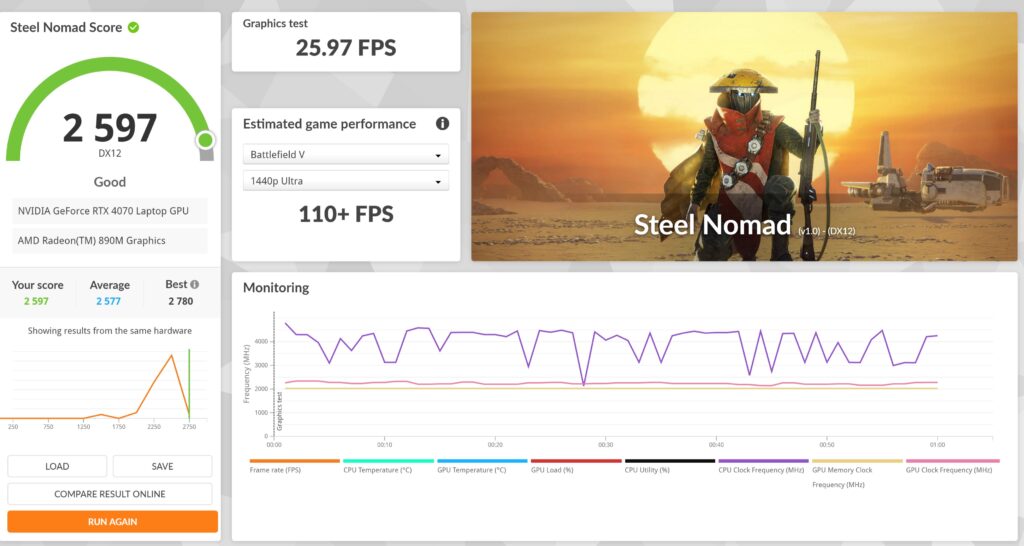

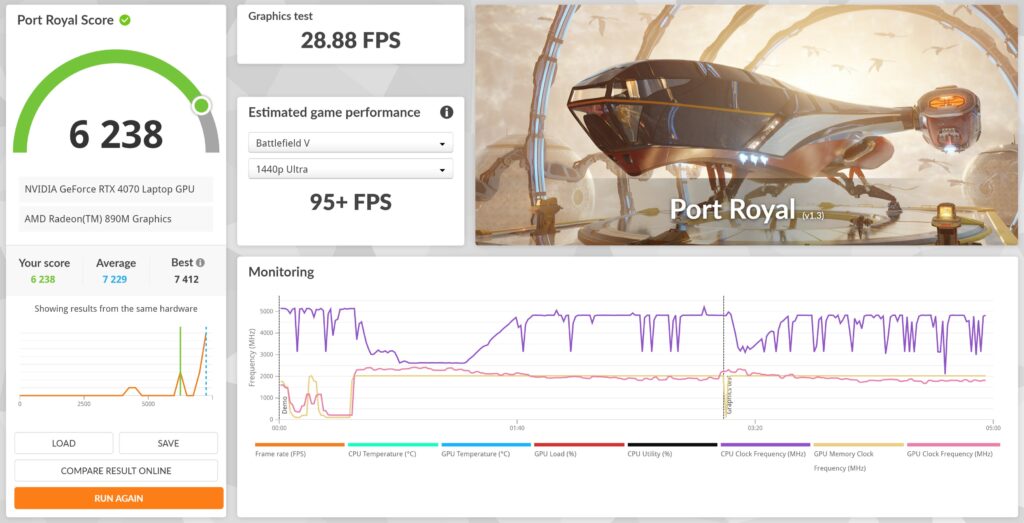
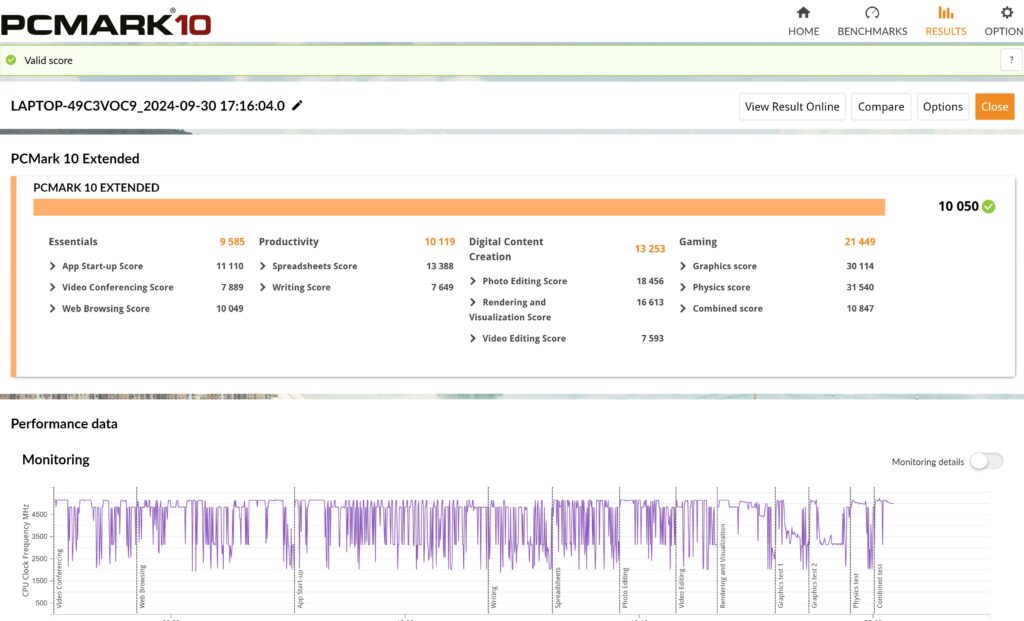
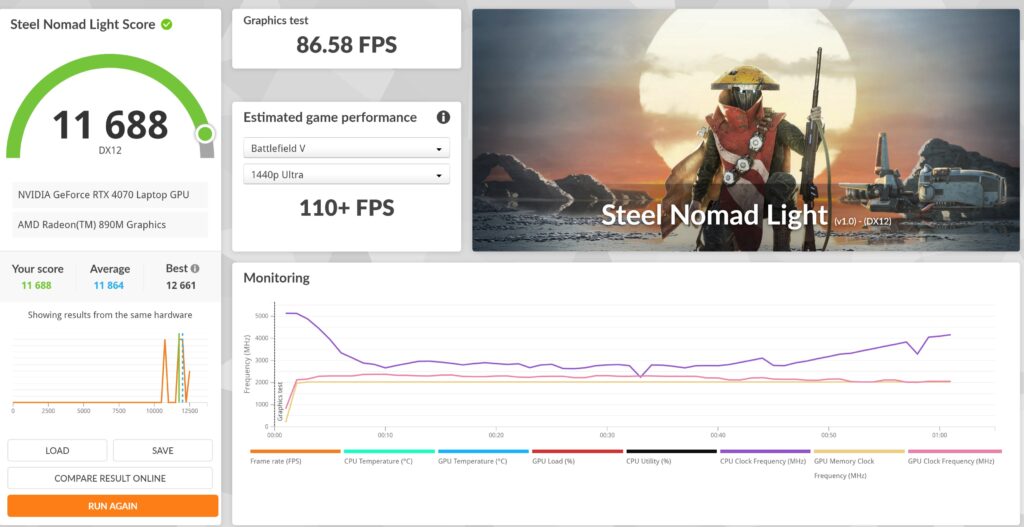
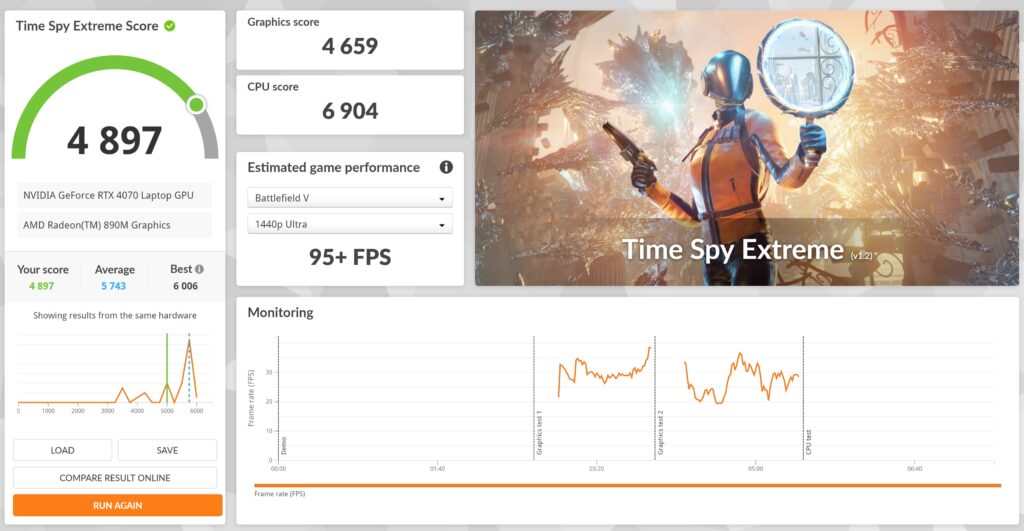
These minor quibbles aside, the H7606 is able to handle everything thrown at it in Performance mode. It was able to handle 4K editing in CapCut without a hitch and is more than capable of tackling other demanding rendering or editing tasks without issue.
While it certainly isn’t intended for gaming, our ASUS ProArt P16 H7606 review sample is certainly capable of doing so in a pinch and managed to comfortably play demanding games like Black Myth Wukong and Cyberpunk 2077 on the highest settings at 4K resolution with DLSS on with an average of about 31fps and 29.97fps on average though you’ll get higher frame rates if you dial the graphics or resolution down a notch.


In Standard mode, there are some compromises to performance seeing the limitations to battery life and fan speed without a constant source of power but in this mode it’s more than capable of handling photo editing and light video editing and rendering along with any amount of general computing tasks.

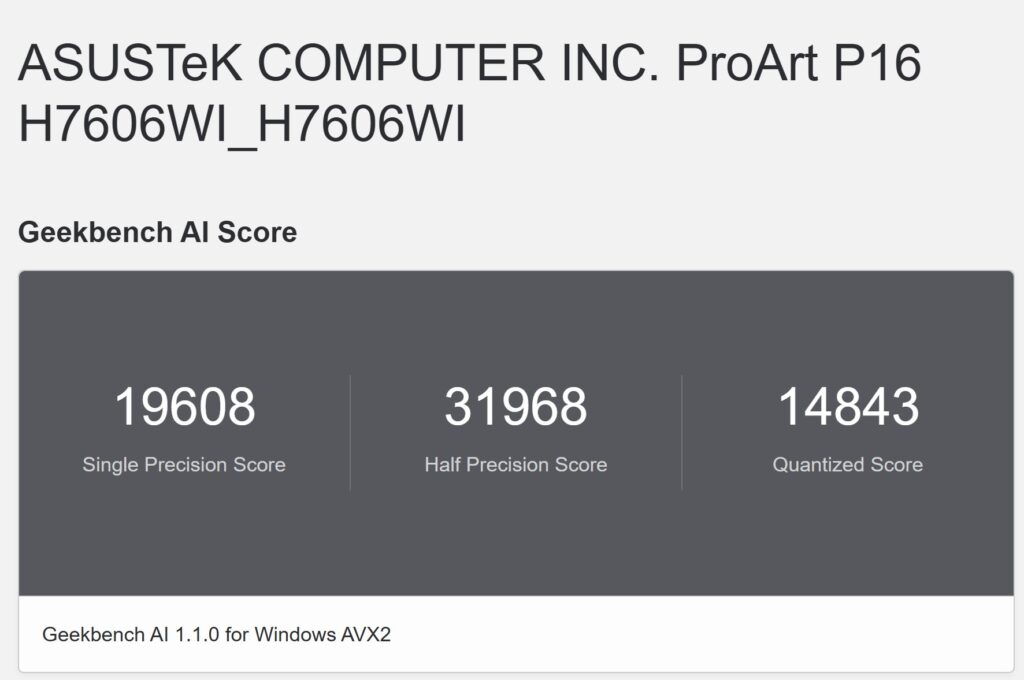
The 4K Lumina OLED display offers up beautifully vibrant and crisp visuals and it is of sufficient quality to meet the needs of demanding content creators with its 100% DCI-P3, Pantone validation and VESA DisplayHDR True Black 500 certification that’s calibrated from the factory.
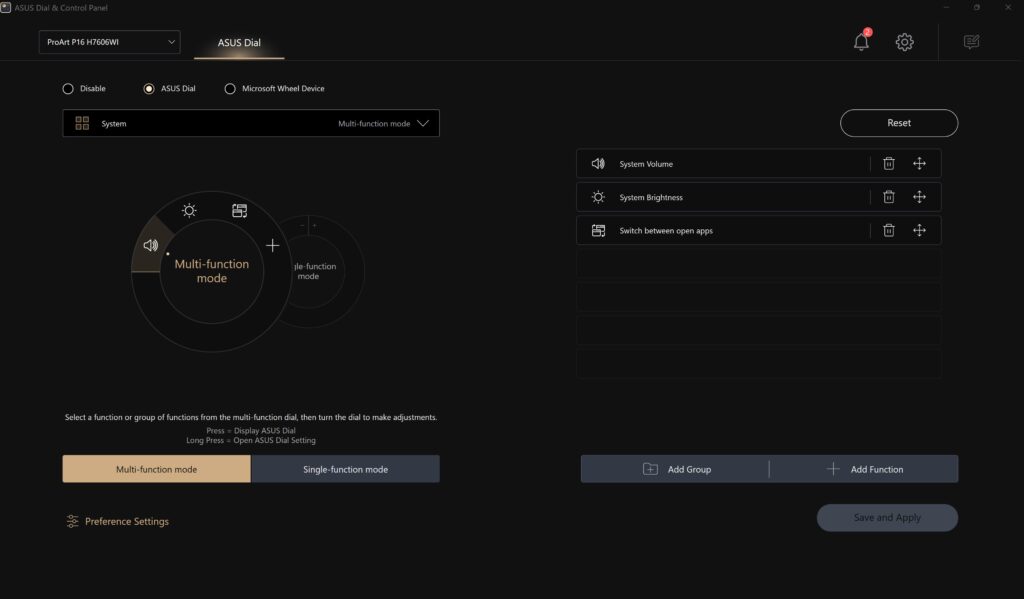
Blacks are beautifully deep and the display supports HDR which makes viewing HDR content a treat on streaming platforms. While the refresh rate is a modest 60Hz, the H7606 isn’t intended to be a dedicated gaming laptop like the Zephyrus G16 and the tradeoff of having a touch-capable screen, higher resolution and colour accuracy is a welcome one.
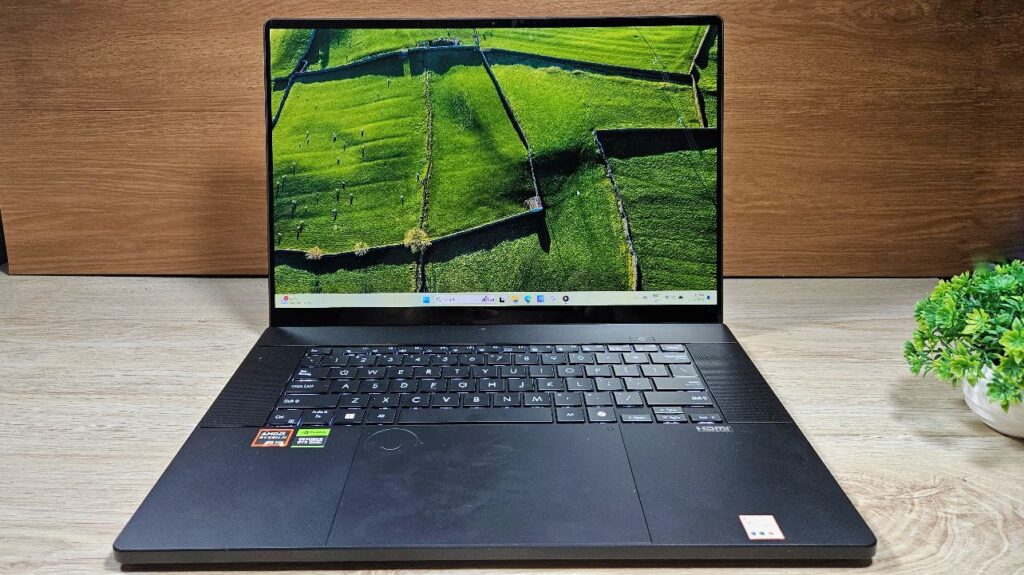
The provided six-speaker array is equally well appointed with a sufficiently wide soundstage for movies and gaming alike with relatively clear vocals. While it isn’t something that a sound editor would rely on in the field, it’s more than enough to get a quick passthrough for an edit or to tackle a match or two in Modern Warfare III.
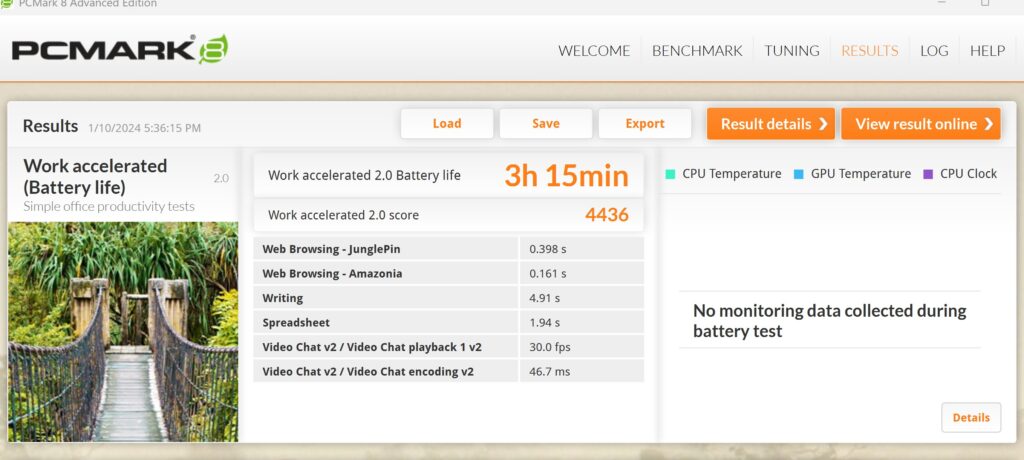
Much like any high-end GPU-packing laptop, our ASUS ProArt P16 H7606 review unit offers middling battery life even with its relatively large 90Wh battery. With casual use on general computing tasks like web browsing and light paperwork along with a few YouTube videos, it lasted just shy of four hours of use. If you’re looking to carry this around for work, it is a prudent measure to carry its charging brick along.
Should you buy the ASUS ProArt P16 H7606?
The ASUS ProArt P16 H7606 is a high-performing laptop that is perfect for content creators with its luscious and colour calibrated Lumina OLED display along with its powerful specifications. Naturally, all this comes at a price and the laptop does not come cheap and it runs hot under full load. Even so, this is one of the best laptops that a serious content creator can buy.

ASUS ProArt P16 H7606 review unit courtesy of ASUS Malaysia. For more details please visit https://www.ASUS.com/my/laptops/for-creators/proart/proart-p16-h7606/
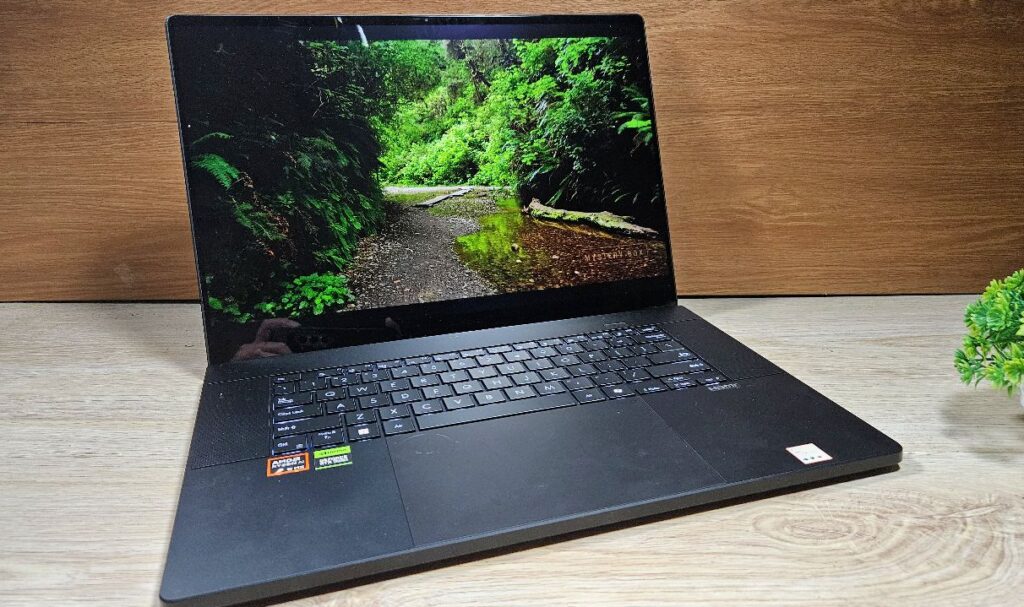
ASUS ProArt P16 H7606
-
Display
-
Performance
-
Battery Life
-
Design
-
Value
ASUS ProArt P16 H7606
The ASUS ProArt P16 H7606 is a high-performing laptop that is perfect for content creators with its luscious and colour calibrated Lumina OLED display along with its powerful specifications.
Pros
Excellent Lumina OLED display
Powerful performance
Cons
Not cheap
Entire chassis gets really hot under load
Fans get loud under heavy use
